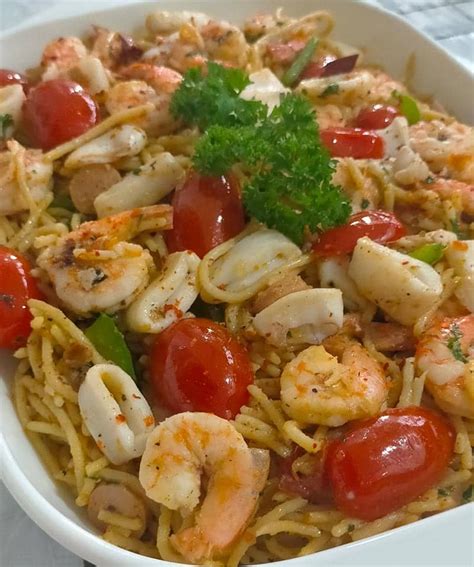Marrie
You need 3 min read
Post on Feb 03, 2025
Table of Contents

Aglio e Olio: A Simple Yet Exquisite Pasta Dish
Aglio e olio, translating to "garlic and oil" in Italian, is a deceptively simple pasta dish that packs a powerful flavor punch. Its elegance lies in its minimalism – the perfect harmony of fresh garlic, vibrant olive oil, and perfectly cooked pasta. This recipe guide will walk you through creating a truly authentic and unforgettable aglio e olio experience.
Ingredients for the Perfect Aglio e Olio
While seemingly basic, the quality of your ingredients significantly impacts the final taste. Choose the best you can find!
- Pasta: 1 pound spaghetti or linguine (high-quality pasta makes a difference!)
- Olive Oil: 1/2 cup extra virgin olive oil (the fruity, peppery notes are crucial)
- Garlic: 6-8 cloves garlic, thinly sliced (fresh garlic is a must)
- Red Pepper Flakes: 1/2 teaspoon (or more, to taste)
- Salt: To taste (sea salt is preferred)
- Fresh Parsley: 1/4 cup, chopped (for garnish)
- Parmesan Cheese (Optional): 1/4 cup, grated (Pecorino Romano is traditionally used, but Parmesan works well too)
Step-by-Step Aglio e Olio Recipe
This recipe breaks down the process into manageable steps, ensuring a perfect result every time.
Step 1: Cook the Pasta
Bring a large pot of salted water to a rolling boil. Add the pasta and cook according to package directions until al dente. Reserve about 1 cup of pasta water before draining.
Step 2: Infuse the Garlic
While the pasta is cooking, heat the olive oil in a large skillet over medium-low heat. Add the thinly sliced garlic and cook, stirring frequently, until it is fragrant and lightly golden (about 3-5 minutes). Be careful not to burn the garlic, as this will make the dish bitter.
Step 3: Add the Spices
Add the red pepper flakes to the skillet and cook for another minute, allowing the flavors to meld.
Step 4: Combine Pasta and Sauce
Add the drained pasta to the skillet with the garlic oil. Toss to coat the pasta evenly. If the sauce is too thick, add a little of the reserved pasta water, a tablespoon at a time, until you achieve the desired consistency.
Step 5: Serve and Enjoy!
Serve immediately, garnished with fresh parsley and, optionally, grated Parmesan cheese.
Tips for the Best Aglio e Olio
- Use high-quality ingredients: The flavor of this dish relies heavily on the quality of your olive oil and garlic.
- Don't overcook the garlic: Burned garlic will ruin the dish. Cook it over low heat and stir frequently.
- Adjust the spice level: Add more or less red pepper flakes depending on your preference.
- Don't be afraid to experiment: Add a squeeze of lemon juice, some chopped fresh basil, or even some cooked shrimp for variation.
Beyond the Basics: Aglio e Olio Variations
While the classic recipe is perfect as is, there are countless ways to personalize your aglio e olio. Consider these exciting variations:
- Aglio e Olio with Shrimp: Add cooked shrimp to the pasta for a protein boost.
- Spicy Aglio e Olio: Increase the red pepper flakes for a fiery kick.
- Lemon Aglio e Olio: A squeeze of fresh lemon juice adds brightness and acidity.
- Aglio e Olio with Broccoli: Add blanched broccoli florets for a healthy and flavorful twist.
Aglio e Olio is a testament to the power of simple ingredients, expertly combined. Follow this recipe, experiment with variations, and enjoy the delicious results of this classic Italian pasta dish. Buon appetito!

